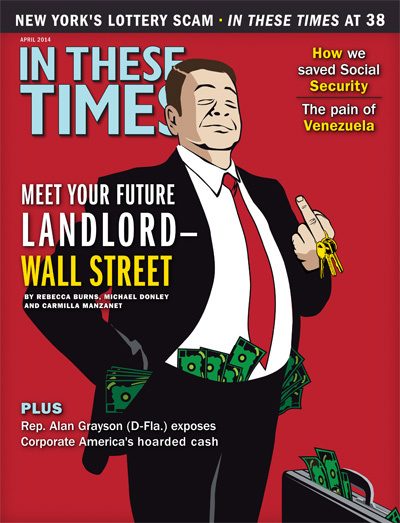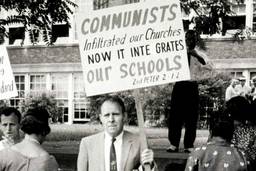The Minor Leagues’ Major Malfunction
Curt Flood’s landmark antitrust suit transformed the Major League, but the Minor League is still bound by archaic rules.
Chris Lehmann

The advent of baseball season is known to launch male writers of a certain age into misty-eyed reveries in which the national pastime blurs into the American civic religion. We hear about the solitary nobility of the multimillion-dollar athlete, the optimistic, this-could-be-the-season bluster from the Major League’s most long-suffering fans, and no end of half-wistful, half scolding references to the mystic beauty of “playing the game the right way.”
But in economic terms, the game has almost never been played the right way. Owing to a 1921 exemption from antitrust statutes, Major League Baseball long operated under a neo-feudal model of labor relations. Free of oversight, team owners colluded to lash Major League players to a labor regime in which owners retained control over a player’s working life, from what team he played for to how much he earned. The only way players could elude this regime was to retire, or to be traded— or released — by their owner (at which point, of course, they passed into a state of fealty to a different owner).
In January 1970, baseball’s feudal edifice began to crumble. St. Louis Cardinals center fielder Curt Flood filed a lawsuit contesting his team’s decision to trade him and several of his teammates to the Philadelphia Phillies. “I do not feel that I am a piece of property to be bought and sold,” Flood wrote to then-MLB Commissioner Bowie Kuhn three weeks before filing the suit.
Flood’s noble cause was doomed — at least in the short term. Players union head Marvin Miller, a former economist with the United Steelworkers, informed him that the Supreme Court wouldn’t overturn the antitrust exemption. What’s more, Miller added, even if Flood did win in court, he would never play for a Major League franchise again. Flood asked whether the challenge would benefit other players in the future. When Miller said yes, Flood replied, “That’s good enough for me.”
Sure enough, the high court up-held the 1921 antitrust exemption and after the 1971 season was done, Flood never played professional baseball again. But the Major League Baseball Players Association struck over the issue in 1972. And by 1976, when pitchers Dave McNally and Andy Messersmith challenged the reserve clause by declaring themselves free agents, the courts upheld their position. The reserve clause was dead.
Free agency now drives much of the modern game, to the dismay of traditionalists who saw stationary lineups as an essential ingredient of the team loyalties that fans develop over time. But the benefits to the players — who, after all, generate the entirety of the game’s entertainment value — have been striking. Baseball players make, on average, a salary more than 40 percent higher than their counterparts in the more lucrative sport of pro football.
This 2014 season finds the labor relations of America’s pastime at a crossroads. The sport’s shamelessly pro-ownership commissioner — former Milwaukee Brewers owner Bud Selig — is stepping down at the end of the year. And the players union, which lost its widely respected leader Michael Weiner to brain cancer last year, has installed former first baseman Tony Clark as its head — the first former player to captain the union.
Meanwhile labor issues are moving to the forefront of the game. In the minor leagues — which are still relics of the old Major League plantation system — players have filed a suit that ingeniously sidesteps the antitrust exemption (which still applies to them, since Congress only suspended it for Major Leaguers) on the grounds that they are members of the working poor, and hence qualify for basic wage protections and overtime pay under the Fair Labor Standards Act. On paper, their case looks strong: Most minor leaguers earn between $3,000 and $7,500 salaries over a five-month season; fast-food workers, by comparison, earn between $15,000 and $18,000 a year. Team owners — who own and control their minor league franchises outright — will likely counter that players voluntarily signed contracts assenting to low wages.
So with new labor and management teams poised to take the field, the onus is on the courts — and perhaps a latter-day Curt Flood or two — to ensure that the game will finally get played the right way.








